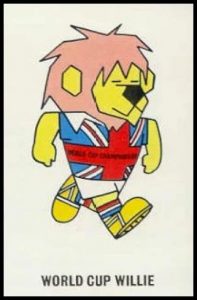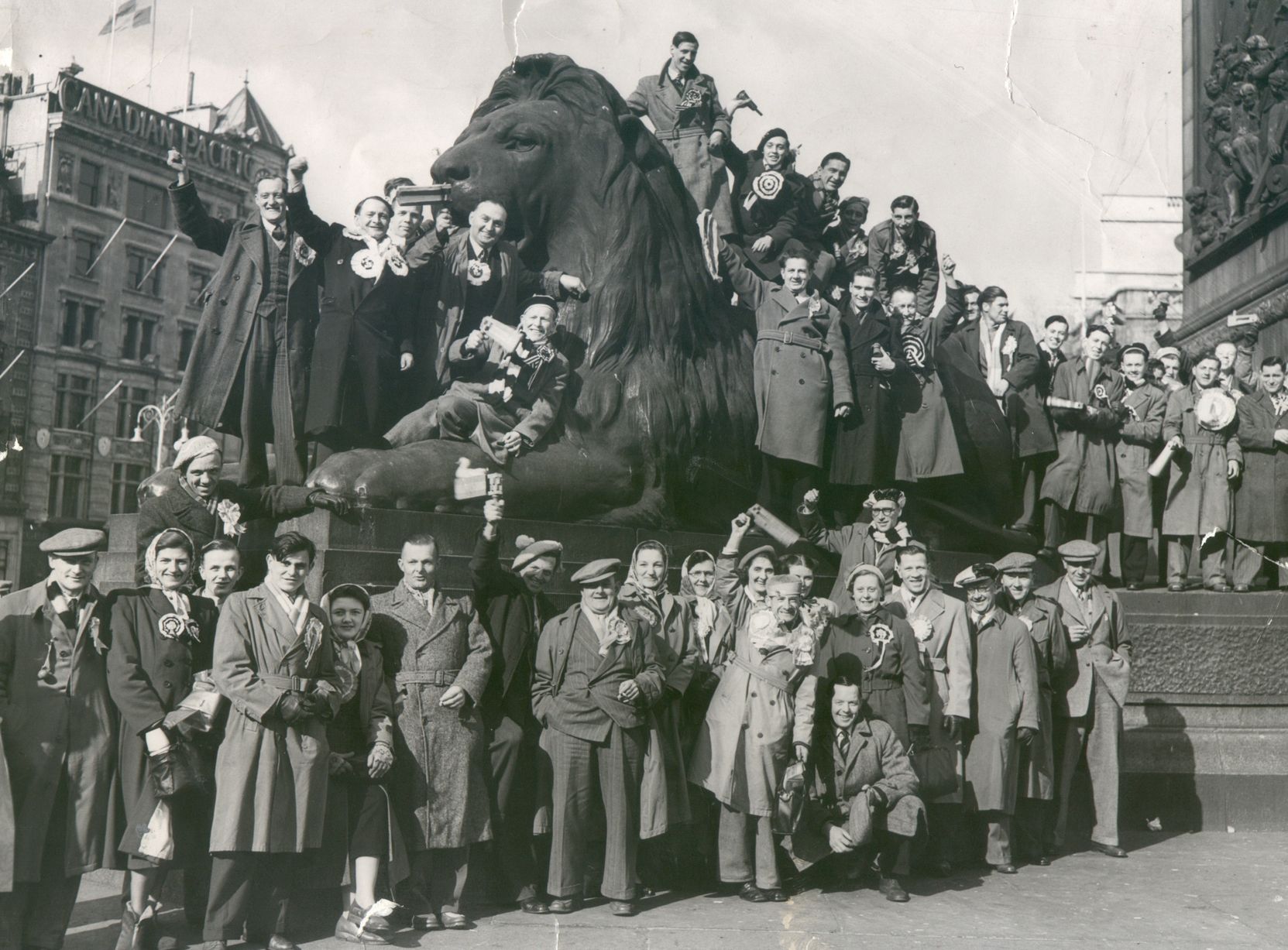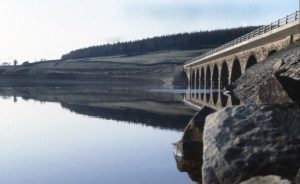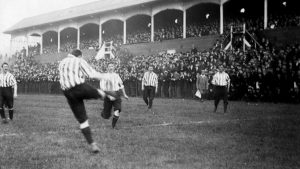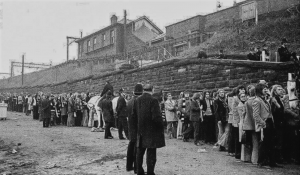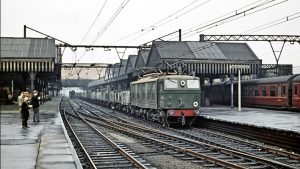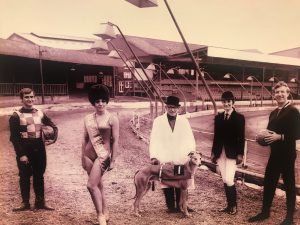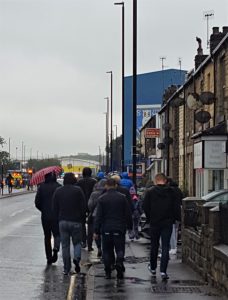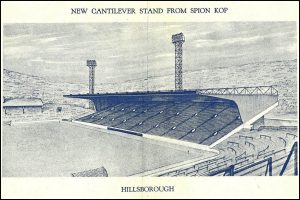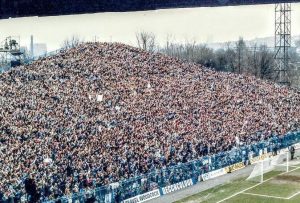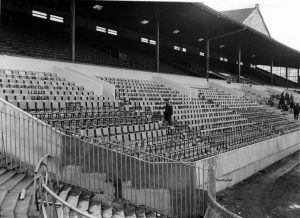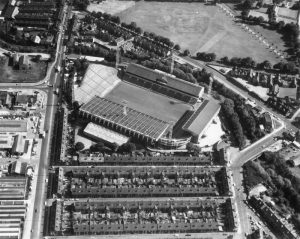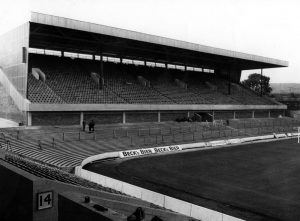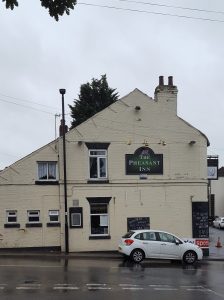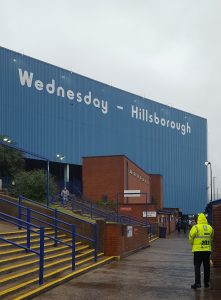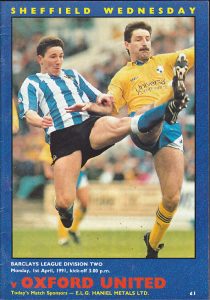Sheffield Wednesday 1 Oxford United 2
League 1
Saturday 2 October 2022

Sheffield star
The context
Simon Inglis describes visiting Hillsborough as “one of the quintessential joys of English sport”. We hadn’t been for some time, so coming here felt long overdue; there was further novelty value in watching third-tier football at a former World Cup, European Championships and FA Cup semi-final venue.
The journey
Bizarre consumer paranoia had seen petrol stations besieged by wild-eyed panic buyers throughout the previous week. We therefore avoided Hyde Road – where two are located practically opposite one another – and instead met up near Stalybridge Celtic’s ground. From there it was a scenic hop, skip and jump along Woodhead Pass into Stocksbridge. Our long run downhill towards Hillsborough predictably featured one garage after another with lots of fuel and no customers.
The history
Owlerton – previously a small rural hamlet – found itself overtaken by Sheffield’s Victorian expansion. Owlerton FC had competed in the FA Cup between 1888 and 1890, but ten years passed before The Wednesday – founded in 1867 – decided to build a new ground there. They previously played at Olive Grove, not far from Bramall Lane; their stay ended abruptly when new lines leading south from Pond Street station (later Sheffield Midland) were built over the site.
This move brought the club – who didn’t become Sheffield Wednesday until 1929 – close to another railway. Trains from Manchester-Penistone via Woodhead Pass and Sheffield Victoria ran nearby, with the station at Wadsley Bridge just half a mile away from Owlerton Stadium. It would remain in service until 1959; football specials continued for another thirty years, even after the much-missed Woodhead Line closed in 1970.
Woodhead had been truly special. The route featured spectacular cuttings and deep tunnels. It was electrified between 1945 and 1955; unusually low-voltage wires necessitated specially-built (Class 76/77) locomotives. Sheffield Victoria – from where prestigious trans-Pennine expresses ran onwards to Marylebone and Kings Cross – stood at right angles to the Royal Victoria hotel, on (as you might expect) Victoria Station Road.
Another near neighbour was – after 1929 – Owlerton greyhound and speedway stadium. This still stands on Livesey Street, but instead of steel and cutlery works is now adjoined by light industry and Napoleon’s casino. Sheffield Tigers motorbike team have been residents ever since the venue opened; crowds of 10,000 once attended, and – thanks partly to diversification into conferencing and leisure – both still thrive there. It has also staged various other sports and events.
The ground
This northern suburb of Sheffield is a thin built-up sliver that nestles between Parkwood Springs’ unexpected inner-city heathland and the crowding Peaks. Heavy rain was sweeping in from their distant slopes. “Where’s the ground?” asked a disorientated Oxford fan. “There”, we said, pointing at four enormous blue-painted stands clearly visible along Penistone Road. These monsters dominate neighbouring houses, retail developments and partly-demolished industrial buildings.
The magnificent 1961 North Stand remains Hillsborough’s crowning glory. Only one cantilever stand had previously been built in Britain (at Scunthorpe’s Old Show Ground); Wednesday’s version was on a much bigger scale, and – using beams anchored behind, rather than propped on posts – effectively rendered traditional football architecture obsolete. 10,000 new seats crowding that touchline did, however, mean it could only now be reached via either Penistone Road or Leppings Lane.
- mound
- squared off (owlstalk.co.uk)
1966 saw Hillsborough host three World Cup group games, along with the quarter-final between West Germany and Uruguay. Any Sixties-era fan would easily recognise their surroundings today. The huge Kop’s cavernous roof might confuse them most; until 1986 this end was an irregularly-shaped mound, but Wednesday – eyeing lucrative FA Cup semi-finals – squared off and expanded both sides by propping new concrete steps on latticed steel girders. The added sections (complete with supporting pillars) made post-Taylor Report seating relatively straightforward.
Completely rebuilt before Hillsborough hosted three 1996 European Championship matches, the South Stand passably imitates Husband & Co’s more elegant forerunner opposite. Its central gable echoes Archibald Leitch’s 1915 original. Top tier and terraced paddock (first seated in 1965) now form one rake; high replacement roofing and an upper level has filled most available room between pitch and the River Don, so that you pass from one end to another by walking underneath.
This one-time 75,000-capacity stadium is completely landlocked on two sides. An expanded North Stand concentrated most turnstiles behind either goal – not problematic at the Kop end, where dozens of them lined Penistone Road’s pavements, but more tricky on Leppings Lane. Hillsborough’s frontage here was funnel-shaped and squeezed awkwardly between the river bank and residential streets. Unnecessary outer gates and the narrow, dog-legged approach made it very uncomfortable on big match days.
A new West Stand was built here in readiness for the World Cup. This squeezed shallow, cramped terraces in front of bare bricks with 4500 seats above and behind. The single central access tunnel seemed like an afterthought. Plenty would subsequently be written about such financially expedient flaws; Leppings Lane had notoriously combined awkward access and uncomfortable viewing conditions long before 15 April 1989, but the Eighties curse of penning – compounded by insensitive, one-dimensional policing – rendered it lethal.
Inglis spoke for many people when he suggested this whole structure should immediately have been bulldozed. Instead – even as millions of pounds were spent on the South Stand rebuild – a clumsy roof extension appeared over hastily-reprofiled and seated terraces. Fewer and fewer people recall that afternoon now, but the West Stand’s continued sombre existence ironically preserves its real truth; poor design and criminal negligence can have tragic consequences.
Flesh and wine
There are three decent pubs around the site of Wadsley Bridge station. Two – from which away fans were traditionally ambushed as they got off their train – admit visitors these days, but we parked behind Fox Hill Mill and settled happily into the Pheasant’s less inclusive public bar. This comes complete with Wednesday artefacts and Hillsborough frieze; it also offered darts, good ale, friendly barmaids and a 100lb meat raffle.
Our food stop of choice would normally be the Vere Road chippy, but we had stayed drinking too long and now needed to decide between chips or kick-off. Luckily our seats beside some side stairs meant I could easily nip out for pies; this did, however, mean getting soaked all over again queuing at an old-school open air kiosk behind the Kop.
The game
Plenty of travelling fans were new to Hillsborough. The West Stand’s upper tier held a good few thousand who had come to watch their club’s first League match here since 1991. They were soon celebrating as Marvin Johnson’s midfield fumbling allowed Herbie Kane to set Cameron Brannagan clear. He finished confidently past snappily-named but badly-positioned Wednesday ‘keeper, Bailey Peacock-Farrell.
Peacock-Farrell did better to keep out Matty Taylor shortly afterwards; his opposite number Jack Stevens also saved well from Barry Bannan. Increased Wednesday pressure after half time saw Saido Berahino head against the post and an equaliser soon followed, Callum Paterson leaping salmon-like to bulge Oxford’s net most satisfactorily following Johnson’s deep cross.
The home team looked increasingly dangerous so that should really have been it. But Oxford held on to grab an injury time winner through James Henry’s opportunistic turn and flick in the crowded box, with Bannan’s even later deflected drive onto their bar no more than inspired frustration. Fans around us were incensed; Wednesday had just seen a blatant penalty denied, despite the linesman’s excellent view of Jack Hunt being brought down.
Teams and goals
Sheffield Wednesday: Peacock-Farrell, Palmer, Iorfa, Dunkley, Johnson, Adeniran, Wing (Dele-Bashiru 67), Bannan, Paterson, Shodipo (Sow 61), Gregory (Berahino 46). Unused subs: Wildsmith, Brown, Hunt, Corbeanu.
Oxford: Stevens, Long, Moore, Thorniley, Seddon, Branagan, Gorrin, Kane (Henry 58), Holland, Taylor (Agyei 70), Forde (Williams 84). Unused subs: Eastwood, McNally, Mousinho, Cooper.
Goals: Sheffield Wednesday: Paterson 73. Oxford: Brannagan 12, Henry 93.
Attendance 22,060.
